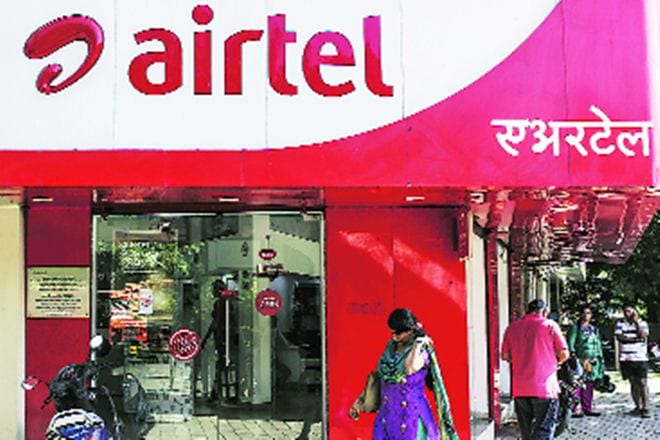The Indian telecom industry is continuing to grapple with disruption with changing customer demands and cut-throat competition. Against this backdrop, we met Bharti Airtel’s (BHARTI’s) management to understand the current industry trends along with the company’s earnings outlook and capex plans.
Management mentioned that the impact from downtrading and the minimum recharge plans is now largely behind it. Moreover, even though the second quarter is seasonally weak, BHARTI is likely to benefit from TTSL (Tata Teleservices) merger revenue contribution and network cost efficiencies (incremental Ebitda margin at 70%). Accordingly, we expect wireless revenue/Ebitda to remain flat in Q2FY20. Bharti has set a target to capture 35-40% of incremental MBB subscriber share. It also aims to pick a similar share from VIL’s subscriber churn. Meanwhile, it is benefiting from a healthy upgrade in voice ARPU from ~Rs 60 to ~Rs 120. The launch of RJio’s fiber-to-the-home (FTTH) services has had a limited impact on BHARTI. In fact, the company cited that 35-40% of renewals have been on annual plans over the last few months. In our view, RJio’s foray has not been as disruptive for BHARTI as the latter boasts a strong product portfolio and has a limited price differential with the former.
There are no plans for Fiber InvIT or Bharti Infratel stake sale over the near term. The company is comfortable with current leverage (net debt-to-Ebitda at 3.2x, incl. Africa IPO funds). Furthermore, capex intensity is likely to remain significantly low with meager 5k new site additions annually. However, we note two key big-ticket capital requirements potentially facing the company: spectrum renewal cost of Rs 100-120 bn which will likely come in FY21 in eight circles and potential risk of licence fee payment of Rs 60 bn (Rs 210 bn incl. penalties and interest payment); BHARTI is awaiting the Supreme Court verdict on this.
We maintain our TP of Rs 420, ascribing 13x EV/Ebitda to the subdued India business and 5x to the Africa business on FY21. While the steady Ebitda performance, deleveraging and the improving FCF position have protected the stock even in the current weak market, an incremental upside would hinge on pricing actions and a favourable verdict by the Supreme Court on the AGR case, in our view. Maintain Buy.
Encouraging revenue/ARPU trends
The impact from downtrading and the minimum recharge plans has largely played out. Notably, even post the rollout of the minimum recharge programme, the company has retained 50-60 m of the total 100-120 m low-ARPU (i.e. Rs 10-15) subscribers, which has driven a 3-4x rise in ARPUs. This apart, tariff upgrades (some minor tweaks in price plans/validity) and Airtel Thanks are contributing to incremental ARPUs.
Capex intensity to be lower; 5G – a far cry
Capex intensity is likely to be lower in FY20 with meagre 4-5k site addition, limited 4G site loading and moderate fibre rollout. We have factored in capex of Rs 220 bn compared to Rs 300 bn in FY19. The government is keen to conduct spectrum auction this fiscal, but BHARTI will not be considering investment in 5G over the next 1-2 years, at least.
Our view
Based on the above factors, we note that BHARTI’s cash requirement (capex + interest cost) could reduce to ~Rs 270-280 bn v/s our current estimate of Rs 312 bn. This should be manageable from its Ebitda (pre-Ind-AS 116 basis) of Rs 271 bn in FY20. Thus, in FY20, the company should reach FCF breakeven (v/s our expectation of Rs 30-40 bn negative FCF) and comfortable debt-to-Ebitda (pre-Ind-AS 116) of ~3x (v/s ~5x just three quarters back). The postponement of the mobile termination rate based on the TRAI’s consultation paper could further lift Ebitda by Rs 10 bn. Irrespective of a price increase, BHARTI should now be able to sustain at the prevailing low ARPUs. Further, ARPU accretion from broadband subscribers (2x ARPU v/s voice only subs) is likely to contribute to growth. We expect consolidated Ebitda CAGR of 12% over FY19-21 on a pre-Ind-AS 116 basis which has a strong upward bias in case of a price increase.


